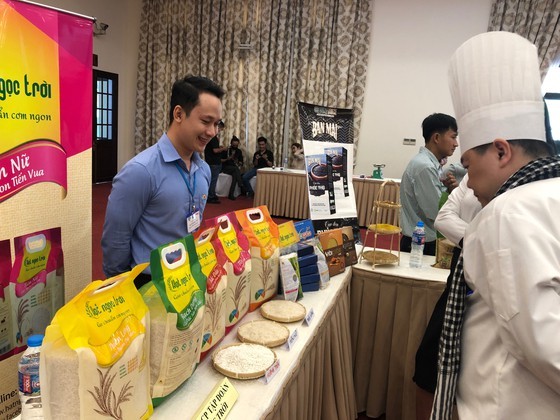
The Agro-Product Processing and Market Development Authority under the Ministry of Agriculture and Rural Development (MARD) on November 4 held an international seminar on regulations for rice exports to the EU market to guide the regulations on fragrant rice varieties exported to the EU to take advantage of tariff preferences in the quotas granted annually by the EU.
In the first nine months of this year, rice exports to the EU reached over US$10 million, up 23.49 percent over the same period last year. Vietnam exports from 6.4 to 7.0 million tons of rice to more than 30 countries and territories every year. Of which, fragrant rice varieties on the export list of to the EU enjoying preferential tariff quotas account for about 43 percent to 46 percent of the total annual rice export volume, with over 3 million tons.
Rice is a commodity with great potential for export to the EU when quotas are expanded. This is a market with plenty of room. It is expected that rice exports, including fragrant rice, to the EU from now until the end of this year, will continue to increase. In recent years, the MARD has actively restructured the sector and implemented international commitments. In which, it drafted and revised legal documents to submit to the Government and the National Assembly for approval to accord with the EU-Vietnam Free Trade Agreement (EVFTA) in the negotiation process of the EVFTA.
According to the Vietnam Food Association (VFA), from the beginning of September to the end of October, ten enterprises had applied for certification with a volume of about 5,932 tons of fragrant rice. Expectations for exporting fragrant rice to the EU in the coming time will be more optimistic because this is a great opportunity for Vietnamese rice to compete in this market in terms of price and quality. To prepare for long and steady strides in the coming time, rice exporters must build their position to grasp and realize this opportunity.
VFA said that enterprises should research, improve technology, and organize closed production lines under international quality standards, such as HACCP, HALAL, or BRC, to ensure the capacity to supply products suitable to the tastes and demanding requirements of high-end consumer markets like the EU.
In the first nine months of this year, rice exports to the EU reached over US$10 million, up 23.49 percent over the same period last year. Vietnam exports from 6.4 to 7.0 million tons of rice to more than 30 countries and territories every year. Of which, fragrant rice varieties on the export list of to the EU enjoying preferential tariff quotas account for about 43 percent to 46 percent of the total annual rice export volume, with over 3 million tons.
Rice is a commodity with great potential for export to the EU when quotas are expanded. This is a market with plenty of room. It is expected that rice exports, including fragrant rice, to the EU from now until the end of this year, will continue to increase. In recent years, the MARD has actively restructured the sector and implemented international commitments. In which, it drafted and revised legal documents to submit to the Government and the National Assembly for approval to accord with the EU-Vietnam Free Trade Agreement (EVFTA) in the negotiation process of the EVFTA.
According to the Vietnam Food Association (VFA), from the beginning of September to the end of October, ten enterprises had applied for certification with a volume of about 5,932 tons of fragrant rice. Expectations for exporting fragrant rice to the EU in the coming time will be more optimistic because this is a great opportunity for Vietnamese rice to compete in this market in terms of price and quality. To prepare for long and steady strides in the coming time, rice exporters must build their position to grasp and realize this opportunity.
VFA said that enterprises should research, improve technology, and organize closed production lines under international quality standards, such as HACCP, HALAL, or BRC, to ensure the capacity to supply products suitable to the tastes and demanding requirements of high-end consumer markets like the EU.
























